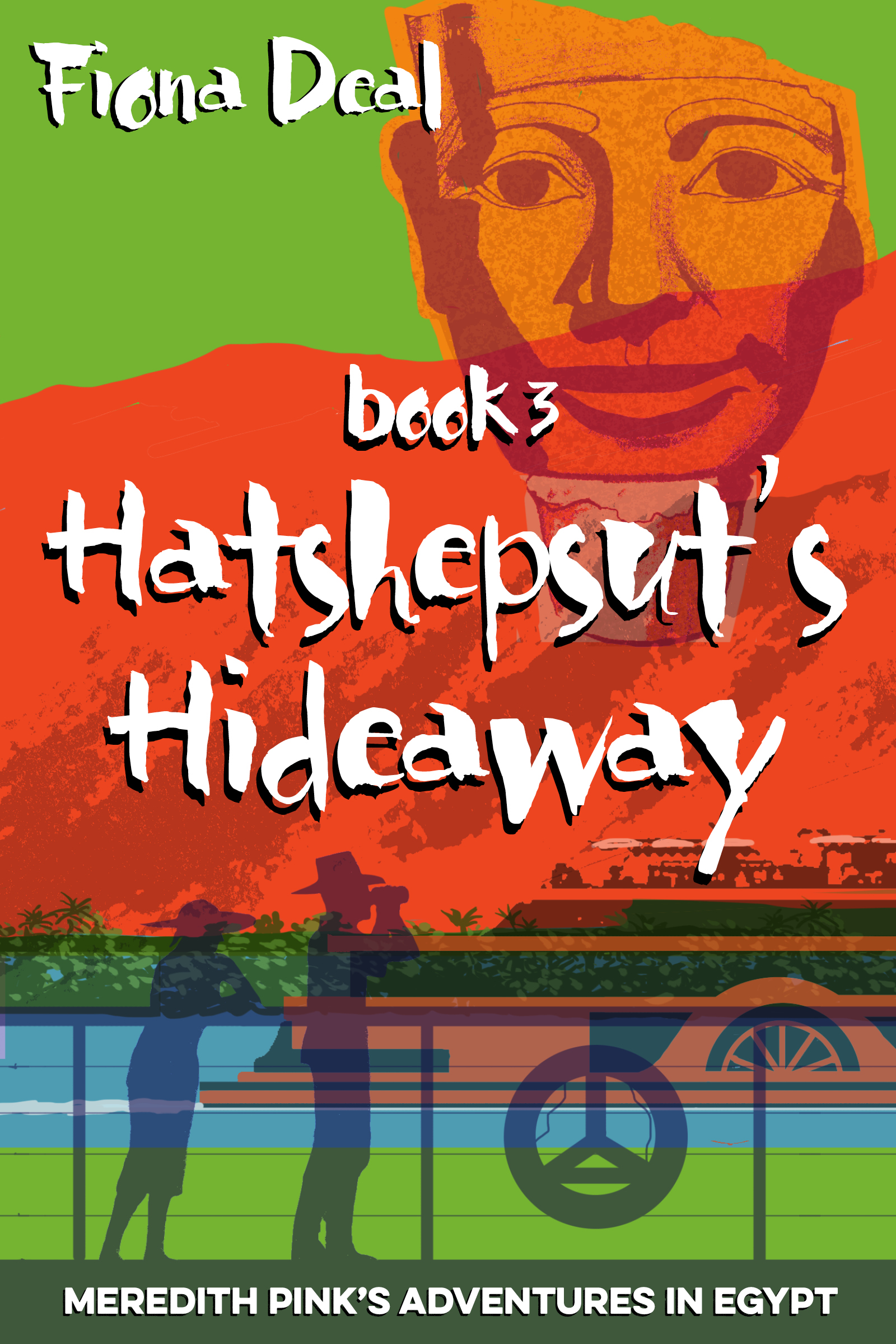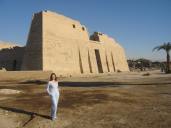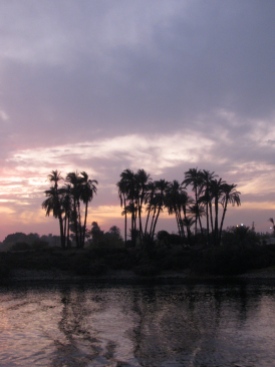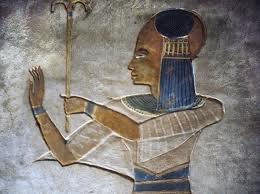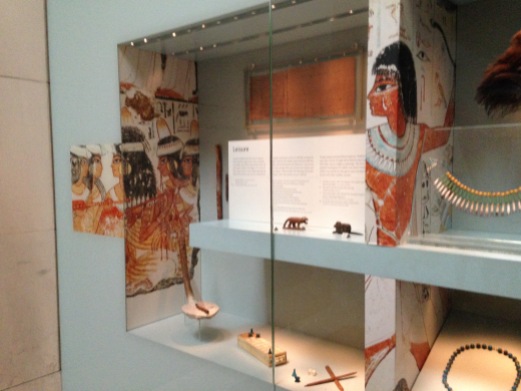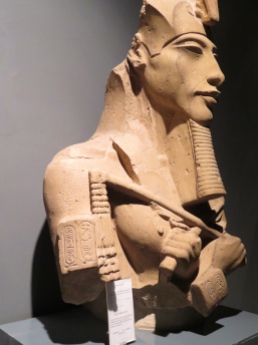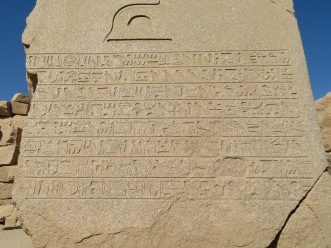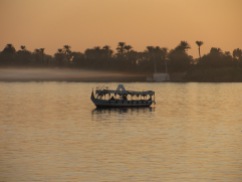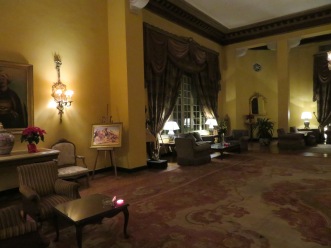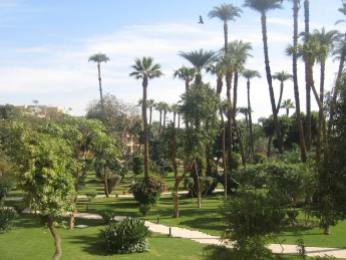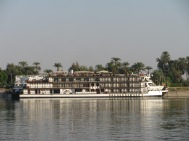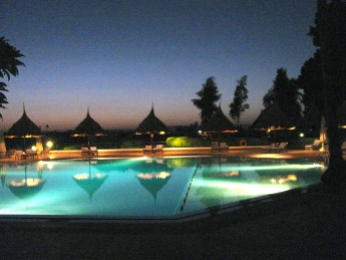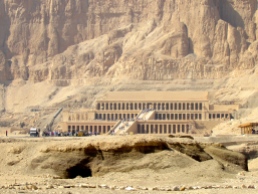My most recent book following Meredith Pink’s Adventures in Egypt, Ramses’ Revenge, deals with the historical events surrounding the so-called Harem Conspiracy to murder Ramses III.
Ramses III ruled Egypt at the beginning of the 20th Dynasty of the New Kingdom, a little over a thousand years BC. It was a period of ancient Egyptian history about which I knew little beyond what is common knowledge to anyone with more than a passing interest in the subject, having been mostly fascinated by the 18th Dynasty pharaohs. But I knew from News headlines published in 2012, (about the time I was writing my first couple of books in the series) that Ramses III had been murdered. A 2012 CT scan on his mummy, revealed a deeply slit throat that would have killed him instantaneously. That the assassination of the divinely anointed ruler was plotted by one of his wives only added to the sense of intrigue and skulduggery. I determined there and then to learn more about this pharaoh who met with such a violent death. And the first germs of an idea for a novel started to spawn.
It’s impossible, of course, to project what we might call ‘personality’ onto an historical individual who lived and died more than three millennia ago. I started out thinking of Ramses III as a ‘victim’ of the Harem Conspiracy, led by one of his junior wives in a bid to place her son on the throne instead of the intended successor, the Crown Prince. But the more I researched the subject, the more it seemed to me that Ramses III was perhaps the architect of his own downfall. I also started to question the so-called ‘junior’ status of the queen who incited the conspiracy. Important men, it seems, rallied to her cause.
There are clues in the monuments left by Ramses III, in particular his spectacular Memorial Temple on the West Bank near Luxor now known as Medinet Habu Temple, that all may not have been well at his pharaonic court.
Ramses III aped his illustrious predecessor, Ramses The Great, in many things, and proved himself a mighty warrior Pharaoh. He is often dubbed ‘the last warrior pharaoh’. He repelled invading forces and kept the Egyptian empire largely intact at a time when the major empires of the Mediterranean and Near East were crumbling.
Like his predecessor, Ramses III had multiple wives (three concurrent principal wives that we know of) and, as a result, hoardes of children. While possibly not in quite the same league as his forebear, said to have had upwards of a hundred offspring, Ramses III copied his hero by carving his temple walls showing processions of royal princes and princesses. But there was one big difference…
Egyptologists state that in Ramses III’s lifetime, he left the label texts that would name his sons and daughters intentionally blank. Equally, of the known depictions of his queens on statuary or temple walls, only one image has the name and titles added. What are we to make of this ?
True, infant mortality was high. Possibly, the king was being circumspect. But it was a simple enough thing to re-carve the wall reliefs – other pharaohs did it all the time! So, one gets a sense of intrigue, of possible rivalry and jealousy; perhaps of different branches of the royal family being played off against each other by a wily old king.
I learned that three of Ramses III’s sons followed him on the throne of Egypt after his death. Each named himself ‘Ramses’ on his coronation (all still hoping some of the might and majesty of Ramses The Great might rub off on them!). These three sons all added their label texts (and presumably also named some of their brothers) to the procession showing the princely images on the wall at Medinet Habu. They became respectively Ramses IV, VI and VIII.
One might ask how it is possible for three brothers to succeed their father. But this makes sense when you learn that Ramses V and VII (grandsons of Ramses III) died young, without heirs.
In the procession of royal princes at Medinet Habu, one son of Ramses III is missing (or, at least, still unlabelled, or had his image usurped by another brother). This is the prince dubbed ‘Pentaweret’ – the young man the conspirator queen intended for the throne. This unfortunate young man was put to death (by enforced suicide rather than execution) when the Harem Conspiracy was foiled – although not in time to prevent the murder of the king.
On my recent visit to Egypt, I was determined to see this procession of princes for myself, having only ever read about it in books on Egyptology. This short clip shows me pointing them out (with apologies for some background noise).
The conspirators were rounded up by the Crown Prince, who became Ramses IV, and put on trial. The majority were summarily executed, with a favored few allowed to take their own lives. What became of the queen who incited the assassination is unknown … although my novel posits a suggestion.
Of course, nobody deserves to be murdered. But I do have to admit that I could start to see how Ramses III might have stirred up a hornets nest of hatred and anger that led to a plot to dispatch him.
When one also learns that the first recorded workers’ strike in history took place under his rule towards the end of his reign, it serves only to reinforce the impression that here was a pharaoh perhaps who failed to care for his people. Apparently the men who toiled in the Valley of the Kings, carving out the pharaoh’s tomb, downed tools and refused to work because they had not received their payment of grain supplies, and were hungry. All this, so we are told, while the king boasted about the great feasts he held in his palace. Considering the palace adjoining the Medinet Habu Temple was within plain sight of the workers’ village in the cliffs of Deir el Medina – probably possible to smell the meat juices cooking – one can sympathize with their discontent.
So, perhaps the conspirators felt confident their plan to remove the king would be met with a groundswell of approval among the local people. And maybe this dissatisfaction among the populace explains why the Medinet Habu has the feeling of a fortified temple, surrounded by an impregnable, thick boundary wall.
There are records showing that the Nile floods failed in the latter years of Ramses III’s reign, possibly as a result of an explosive volcanic eruption on the other side of the world. Not his fault, for sure; but perhaps an economic downturn needing a different style of leadership. So, my overwhelming impression, having researched the man, is that Ramses III would not have won any popularity contests in the latter part of his reign.
The murder of the king is said to have taken place in the royal harem which was located in the Eastern High Gate in front of the Medinet Habu Temple, shown in one of the pictures below.










Ramses’ Revenge is the tenth book in my series and sets out to look for the motive and means behind the Harem Conspiracy that led to the assassination of Ramses III. As with all the books in the series, it is set in the present day, but has an ancient mystery at its heart.
Fiona Deal, author of Meredith Pink’s Adventures in Egypt – Mysteries of modern and ancient Egypt – all available on Amazon.com and Amazon.co.uk in both Kindle and paperback.


